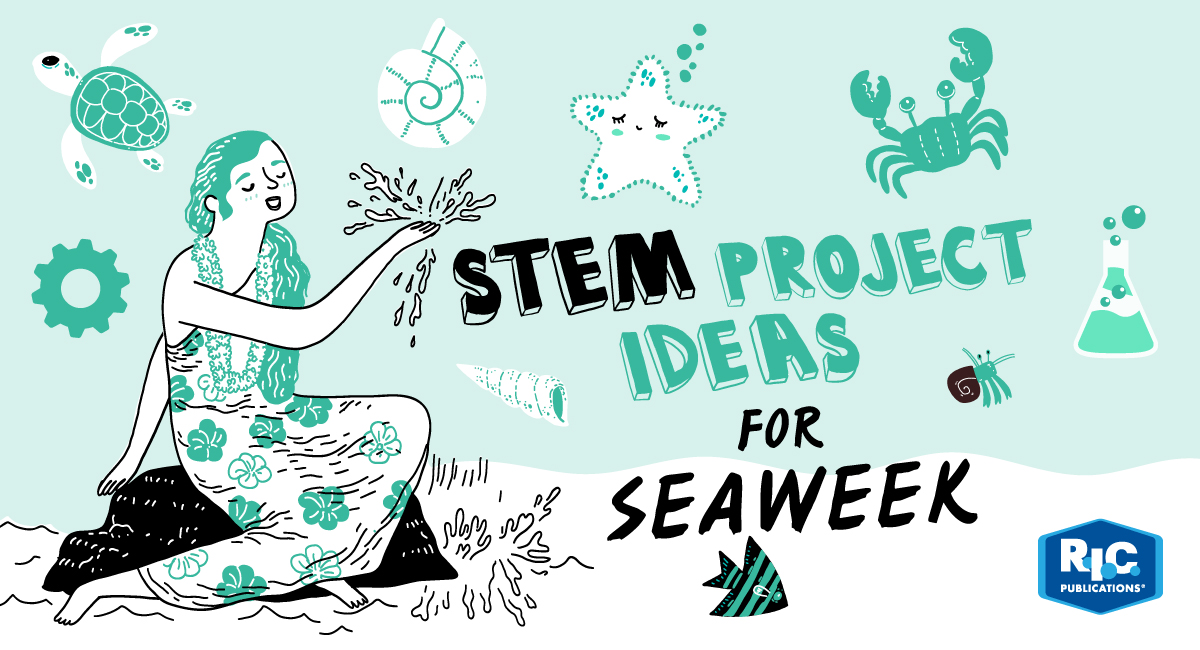- Tuesday 05 March 2024
- 0 Comments
Are you looking for a hands-on way to teach students about nature, the ocean, and our connection to the environment?
From recycling, to water and air pollution, to habitat destruction, and climate change effects, Seaweek is a great opportunity to explore different learning areas and connect real-life concepts back to Science!
If your school is planning to participate in Seaweek, then get prepared ahead of time with some STEM project activities to get your students thinking creatively about their impact on the environment and the oceans, and what they can do to play an active role in ocean and beach conservation.
Check out these STEM project activity ideas:
Biodiversity Studies
Combine clean-up efforts with a biodiversity study. For example:
- Visit a local beach with mangroves and study the role mangroves play in protecting coastlines and supporting biodiversity.
- Organise a beach excursion with the intention of collecting and sorting beach litter while learning about the impact of pollution on ocean ecosystems.
During the excursion, task students with creating a short documentary or presentation documenting their findings in these areas and the potential impacts littering can have on native flora and fauna.
Beach Erosion Solutions
Task students with developing and testing solutions to address beach erosion.
Students can use their engineering, mathematical and technology skills to design structures such as breakwaters or groynes that will mitigate the impact of erosion and preserve coastal habitats.
Have students create a small-scale, working prototype for assessment purposes.
Robot Trash Collectors
Task students with designing and building a simple robot capable of navigating ocean or beach environments to collect and remove pollution.
For bonus points, the robot should be designed with a feature that can aid students in waste collection cleanup (e.g. navigation system, object recognition, weight measurement system, compacting system, etc.)
Students engaging in this activity will be using their engineering and technology skills.
Sea Turtle Conservation Technology
Task students with developing a drone that can monitor and protect sea turtle nests. The drone must have a special feature (e.g. sensors, real-time nest temperature monitoring, threat detection, low-noise propulsion, etc.)
Students should explore ways to minimise human impact or nesting sites and ensure the survival of tea turtle populations with this activity.
Have students create a small-scale, working prototype for assessment purposes.
Wave Energy Converter
Task students with designing a device that captures and converts wave energy into electricity.
Students can learn about the engineering principles behind wave energy conservation and test the efficiency of different designs.
To assess the project, you can ask students to provide labelled technical drawings or diagrams of their creation.
Bring more STEM learning into your classroom with STEM projects!
With STEM becoming so essential to classroom teaching, we’ve extended our February bundle deal where you can get STEM Projects boxes 4, 5 and 6 for a special, bundled price.
With STEM Projects, students can work collaboratively or individually to build transferable problem solving and innovative thinking skills for engagement with the everyday world, including Science knowledge and skills, Design and technology skills, Mathematics skills and general capabilities. Shop STEM projects today!
